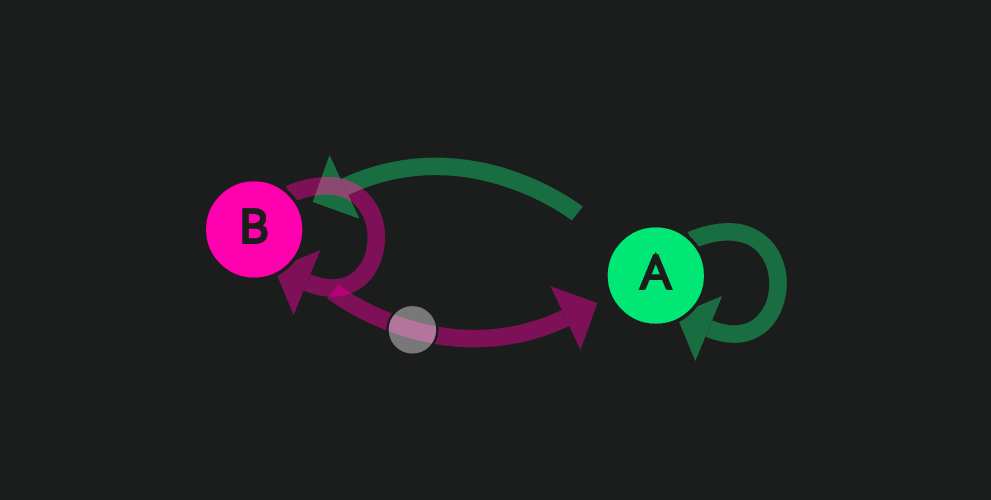In Software Development
In this article, we will explore the concept of decentralized POMDPs and how they can be enhanced with graphs to improve information gathering. We will also discuss some examples of decentralized POMDPs with graphs and their applications.

Editor

In the field of artificial intelligence, decentralized partially observable Markov decision processes (POMDPs) are widely used for modeling problems where multiple agents need to make decisions while lacking complete information about the environment. Decentralized POMDPs offer a flexible framework for modeling complex problems involving multiple agents and uncertain environments. In recent years, researchers have focused on improving the performance of decentralized POMDPs by incorporating graphs into the decision-making process.
What are Decentralized POMDPs?
A decentralized POMDP is a model that captures the interactions between multiple agents in a partially observable environment. In this model, each agent has its own belief about the state of the environment, and each agent's actions affect the state of the environment and the observations that other agents receive. The goal of the agents is to collectively maximize their expected reward while taking into account the uncertainty of the environment.
In a decentralized POMDP, each agent has a local observation, and the agents must communicate with each other to share information and coordinate their actions. The communication between agents is essential for making good decisions in decentralized POMDPs. However, communication in a decentralized POMDP can be difficult because agents may have different beliefs about the state of the environment, and the environment may change rapidly.
Decentralized POMDPs with Graphs
One way to improve the performance of decentralized POMDPs is to incorporate graphs into the decision-making process. In this approach, agents are represented as nodes in a graph, and edges between nodes indicate the communication channels between agents. By incorporating graphs, agents can make decisions based on the global structure of the graph, rather than just their local observation.
The graph structure can be used to improve the efficiency of communication between agents. For example, agents can communicate with their immediate neighbors in the graph to reduce communication costs. Moreover, the graph structure can be used to improve information gathering by guiding agents to explore areas of the environment that have not been explored yet.
Information Gathering in Decentralized POMDPs with Graphs
In a decentralized POMDP with graphs, information gathering is a critical task. Information gathering refers to the process of exploring the environment to learn more about its state. Information gathering is necessary for making informed decisions in a decentralized POMDP.
There are several approaches to information gathering in decentralized POMDPs with graphs. One approach is to use heuristics to guide agents to explore unexplored areas of the environment. For example, agents can be guided to explore areas of the environment that have a high probability of containing useful information.
Another approach is to use reinforcement learning to learn the optimal exploration policy. In this approach, the agents learn from their experience to explore the environment in a way that maximizes their expected reward.
Examples of Decentralized POMDPs with Graphs
There are several examples of decentralized POMDPs with graphs in the literature. One example is the Dec-POMDP with Gaussian processes (GPs) approach. In this approach, the agents use GPs to model the environment and make decisions based on the global structure of the graph.
Another example is the Dec-POMDP with dynamic influence diagrams (DIDs) approach. In this approach, the agents use DIDs to model the environment and make decisions based on the global structure of the graph.
Applications of Decentralized POMDPs with Graphs
Decentralized POMDPs have a wide range of applications in various domains, including robotics, autonomous systems, and multi-agent systems. Here are some of the applications of decentralized POMDPs.
Robotics
Decentralized POMDPs can be used to develop robots that can work collaboratively with each other in complex environments. For instance, a team of robots can use decentralized POMDPs with graphs to coordinate their actions and work together to achieve a common goal.
Autonomous systems
Decentralized POMDPs can be used to develop autonomous systems that can operate independently in complex environments. For instance, autonomous vehicles can use decentralized POMDPs to make decisions about their actions based on the actions of other vehicles and the environment.
Multi-agent systems
Decentralized POMDPs can be used to develop multi-agent systems that can work collaboratively to achieve a common goal. For instance, a team of agents can use decentralized POMDPs to coordinate their actions and work together to achieve a common objective.
Information gathering
Decentralized POMDPs can be used to gather information in complex environments. For instance, a team of agents can use decentralized POMDPs with graphs to gather information about an environment and communicate that information to a central node.
Resource allocation
Decentralized POMDPs can be used to allocate resources in complex environments. For instance, a team of agents can use decentralized POMDPs with graphs to determine how to allocate resources such as energy, bandwidth, and storage.
Conclusion
Decentralized POMDPs are a powerful framework for modeling multi-agent decision-making problems in a wide range of domains. However, they also present significant challenges in terms of scalability and information gathering. The use of graphical models and communication protocols can help to address these challenges, enabling agents to collectively reason about the state of the world and make effective decisions. As research in this area continues to progress, we can expect to see more sophisticated algorithms and frameworks for solving decentralized POMDPs in increasingly complex and dynamic environments.
Sources:
- Amato, C., & Konidaris, G. (2019). POMDPs for Robotics: A Review. arXiv preprint arXiv:1911.09351.
- Oliehoek, F. A., & Amato, C. (2016). A concise introduction to decentralized POMDPs. In Multi-Agent Systems (pp. 381-405). Springer, Cham.

